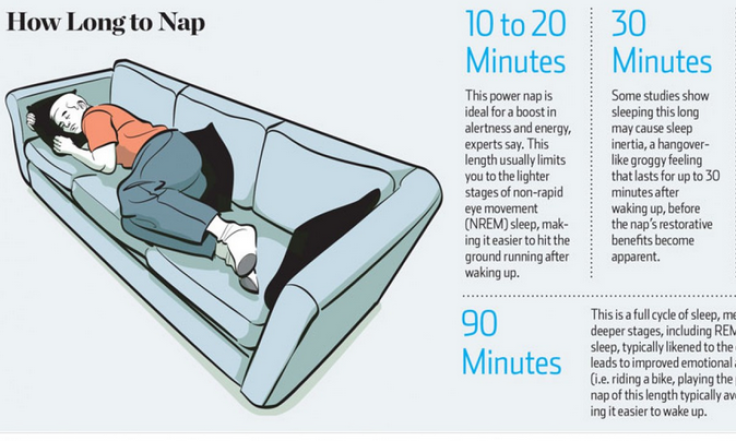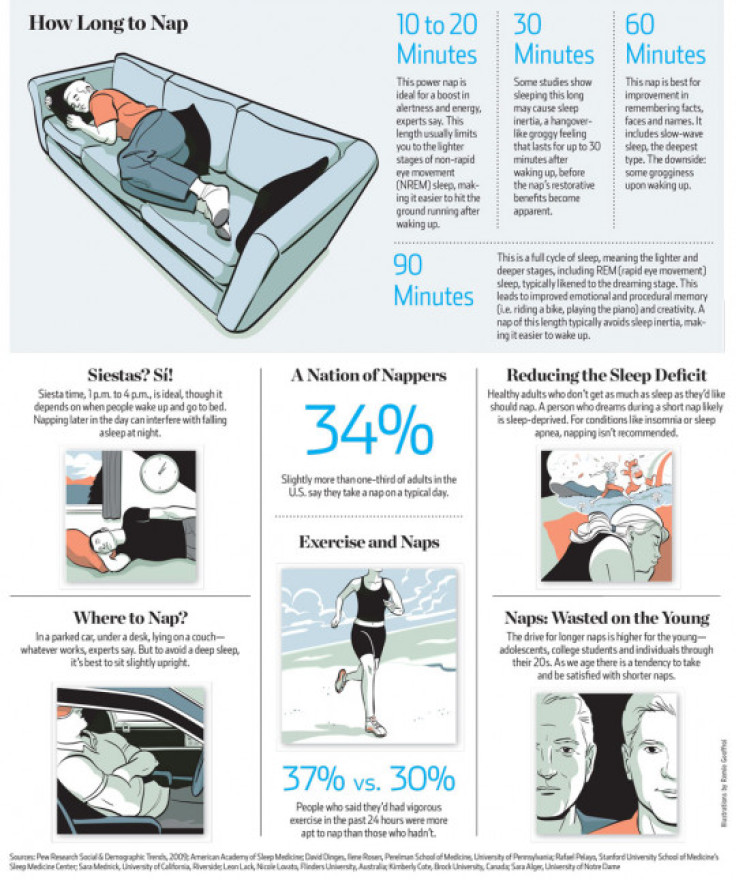Nap Time: Studies Show Afternoon Naps Help Improve Emotional Health, Memory

Amid a long day at work or school, most of us turn to our afternoon cup(s) of coffee for extra energy. However, closing our eyes for just a few minutes to nap may do much more for our emotional, mental, and physical health. In a Wall Street Journal infographic, entitled "How to Take the Perfect Nap," researcher suggests the most useful nap depends on what the napper needs.
Contrary to popular belief, the perfect nap doesn't need to be long — but it must be consistent, quick, and in the dark. The power nap (10 to 20 minutes) is ideal for a boost in focus and productivity, according to a 2012 study. Researchers found the 10-minute nap produced immediate improvements in sleep latency, sleepiness, fatigue, vigor, and cognitive performance. The 20-minute nap, however, produced improvements 35 minutes after napping, and lasting up to 125 minutes.
Although it may be tempting to stay asleep, a 30-minute nap can lead to sleep inertia, or the feeling of grogginess and disorientation that comes when waking up. A 2015 study found sleeping for up to 30 minutes can reverse the hormonal impact of a poor night's sleep. Researchers claim their study is the first to find napping could be used to restore biomarkers of neuroendocrine and immune health back to what's considered normal.
Getting up to 60 minutes of shut eye can also help us feel refreshed and rejuvenated. This nap is known for improvement in remembering facts, faces, and names. It's also been shown to improve alertness for up to 10 hours. The only downside to this hour-long slumber (because of course) is the increased chance you wake up feeling groggy.
Napping for more than 90 minutes usually goes through ever sleep stage, including REM and deep, slow-wave sleep, which helps to clear the mind, improve memory recall, and restore lost sleep. Interestingly, naps that include a full sleep cycle limit sleep inertia and make it easier for us to wake up.
Sleep has been consolidated into one long period, but the reality is our reaction time, memory, and alertness diminish come three o'clock. This is why some Latin American countries have a Siesta time, known as nap time, held between 1 and 4 p.m.
Remember, napping later in the day can interfere with us falling asleep at night, and disrupt our body clock. So nap responsibly.




























